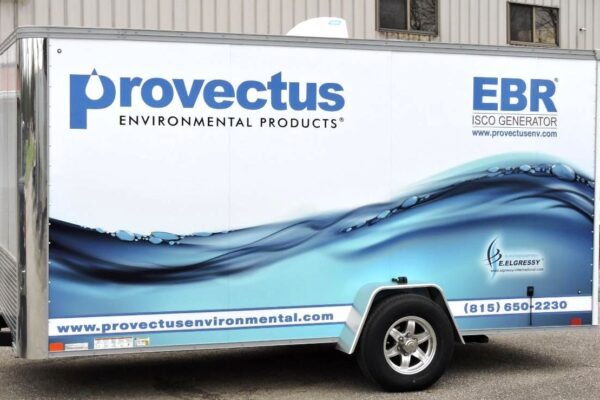CHICAGO, IL, JANUARY 7th, 2016: Provectus Environmental Products, Inc. announces that the US Patent and Trademark Office recently issued US Patent No. 9,221,669 B2 describing the use of antimethanogenic reagents (“amr”) to yield safer, more effective remedial actions. Provectus markets this technology globally with patent filings in the USA, Australia, Brazil, Canada, China, Colombia, Japan, Mexico and the EU, as an integral component of our product offerings that uniquely enable active control of excessive methane production:
- Provect-CH4® Methanogen Inhibitor and ERD/ISCR Supplement: Water-soluble amendment that can be used as a supplement to effectively control methane production when combined with various ERD amendments (e.g., [emulsified] oils, lecithin, lactates, molasses, sugars, etc.) or conventional ISCR reagents that do not (and cannot) have antimethanogenic compounds.
- Provect-IR® Solid, Antimethanogenic ISCR Reagent: As a prime originator and developer of the original ISCR reagents over 10 years ago, staff now at Provectus know that Provect-IR is a genuine improvement on the ISCR process and its older product formulations. Provect-IR is a much more efficient, cost effective and safer ISCR approach.
- Provect-IRM® Solid Antimethanogenic ISCR Reagent / Metal Stabilization Reagent: The Provect-IR technology core makes this a more effective means of metal immobilization/ISCR that minimizes production of methylmetal(loids) for safer, more effective, long-term immobilization.
- ABC-CH4® Liquid Antimethanogenic ISCR Reagent: A liquid, antimethanogenic ERD amendment that can be applied via screened systems. By inhibiting methanogenesis, this is a more efficient and safer ERD approach.
- AquaGate-CH4™Composite, Antimethanogenic Reactive Capping Technology: Developed in collaboration with AquaBlok, LTD subaqueous caps can be constructed more effectively by minimizing gas ebullition and contaminant methylation.
- EZVI-CH4™ Antimethanogenic DNAPL Treatment: Unique reagent can be used for safe and effective treatment of chlorinated solvent DNAPL sources.
“Regulations and guidelines recently published by the US EPA and various State agencies (Read Here) have concluded the debate as to whether or not methane production as a function of ERD or conventional ISCR treatment has relevance to our industry”, stated Dr. Jim Mueller, President at Provectus. “Practitioners who have implemented our technologies know first-hand that they performed as described (i.e., timely and effective remedial actions) and avoided potential problems such as, induced vapor migration, heavy metal mobilization, and/or other issues, thereby improving safety and reducing cost by inhibiting the wasteful consumption of supplied hydrogen (i.e., fermentable substrates) in the production of methane. Having observed directly the consequences of unrestrained methanogenesis during my own career, I am confident that the true significance of this technology advancement will become increasingly apparent to responsible members of our professional community”, stated Mueller.
As we enter an exciting 2016, stay tuned for continued technology updates, case studies, and client testimonials. Onward and upward!



